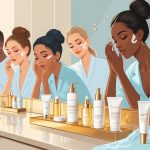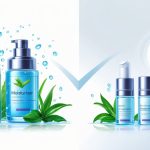Volumizing Shampoo Labels Finally Exposed by Industry Insiders
Common Issues With Volumizing Shampoos
Here’s what bugs me: every bottle promises “weightless lift” like there’s no downside, but come on. Ingredients get thrown around, labels scream “for sensitive scalp” or “dandruff-free” and then my roots flop by noon or my scalp flakes like I’ve got a snow globe on my head. There’s always a catch—nobody just admits it.
Product Buildup and Scalp Concerns
Half these so-called volume shampoos are basically dish soap in disguise. My scalp ends up squeaky, not in a good way. Industry people mumble about polymers and grippy agents—seriously, it’s like someone put hairspray in my shampoo. At a trichologist briefing last year, they said too much of this “lift” stuff causes major buildup, especially if you love leave-ins or dry shampoo (guilty). The “weightless” thing? Sometimes it’s just a temporary illusion. I asked a formulator for a fix—they said to alternate with a gentle sulfate-free wash and actually scrub your scalp with your fingers. You’d be shocked how many people don’t. Also, overusing these volume shampoos can freak out your scalp, kind of like those harsh dandruff formulas. I once fell down a Reddit rabbit hole where everyone was posting flaky hairline pics. It was… a lot.
Dandruff, Sensitivity, and Hair Damage
Dandruff—ugh. It’s what everyone asks about after trying a new “volumizing” thing. White flakes, black shirt, instant regret. Most volume shampoos go after oil and moisture like it’s their job, but the harsh ones always leave me itching. Dr. Jensen at the National Hair Society said some formulas strip lipids, which just means your scalp gets mad and sometimes rashy. I’ve been that person frantically Googling “shampoo allergy rash” at midnight. And the “damage repair” claims? Mostly wishful thinking. High-alkaline, volume-boosting blends can leave your cuticle raised, so if your hair’s already fried (bleach, winter, whatever), it’s just more tangles and breakage. The Better Not Younger blog basically says volume shampoos aren’t miracle workers for weak hair—sometimes you just need something gentler, like hyaluronic acid or panthenol, but you won’t find those in the cheap stuff (see moisturizing suggestions for volume shampoos). When my flakes get out of hand, I switch to a scalp-soothing formula for a week and pile on leave-in conditioner, even if the bottle says I won’t need it. Big, crunchy roots? Not worth it. Also, more laundry—tiny white spots everywhere.
Emerging Trends in Volumizing Shampoo Formulas
Nobody’s just putting up with limp hair anymore, but buying volumizing shampoo is like wading through a swamp of buzzwords and weird chemicals. Some days I’m stuck decoding “vegan” logos and wondering why the ingredient list looks like a chemistry final. Every week, there’s another bottle promising zero sulfates, smarter actives, and “sustainability,” but it’s rarely as clear as they make it sound.
Vegan and Cruelty-Free Innovations
Trying to find a volumizing shampoo that’s actually cruelty-free? Good luck. Shelves are full of “vegan” badges—no animal testing, no keratin, no beeswax, no honey proteins (bye, old-school shine). But labels are still sketchy. I once bought a “vegan” shampoo only to find lanolin (sheep grease!) hidden in the fine print. You basically need a magnifying glass and a trust issue.
Tip from a formulator I bugged: check for third-party certifications like Leaping Bunny or PETA. Over 43% of shampoos now shout about being cruelty-free, but not all of them use plant proteins that actually work. My stylist loves pea peptide blends, but one left my scalp so dry it squeaked. It’s a crapshoot. Also, why do all the “natural” replacements have names I can’t pronounce, like cetrimonium chloride from coconut, and then my hair smells like oatmeal?
Clean and Sustainable Ingredient Choices
Ever walk down the “natural shampoo” aisle and feel like you’re in a grocery store? Labels everywhere—phthalate-free, microplastic-free, “biodegradable surfactants,” “hemi-squalane” (which, by the way, is from sugarcane, not sharks). There are even solid shampoo bars now, which last longer than my willpower at a bakery.
But half these brands are just greenwashing. The only helpful guide I found was a survey at UL Prospector; turns out, less than 9% of volume shampoos actually pass third-party “natural” standards. Ignore the vague stuff. The best ones ditch silicones for techy polymers that rinse out and don’t trash the water. I looked up industry data on clean ingredients. Brands brag about “sustainable guar gum,” but it’s getting pricey and smaller companies can’t even afford it.
Fortifying With High-Tech Actives
My shower is basically a graveyard of fortifying shampoo bottles that never lived up to the hype. The new thing? Engineered peptides and fancy polymers. Old ingredients, new marketing. Labels say “strength complex” or “density amplifier,” but my hair’s only bouncy until the weather changes—then it’s just static.
Dermatologists keep saying the best volumizers coat hair but rinse cleanly. Still, brands love shouting about “hemi-squalane”—supposed to make hair light and resilient, but if you mess up, it’s just greasy. Consumer Insights 2025 says fortifying actives are about to explode, so if your bottle says “polysaccharide complex” or “bond-plex,” you’re probably riding the 2025 shampoo formula trends. My neighbor claims you have to alternate with protein-free days for best results, but I always forget and double up by accident. Is there a right way? Who knows.



